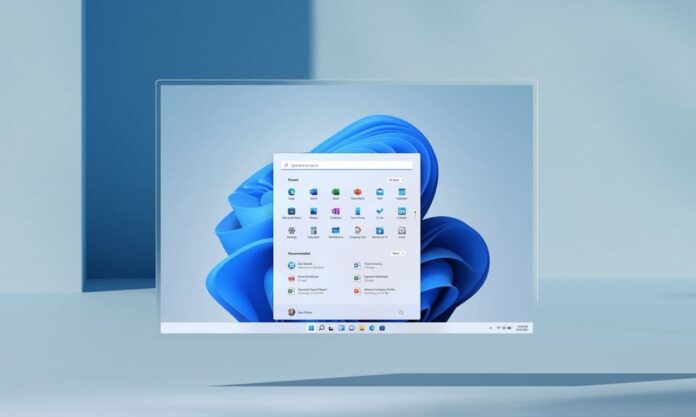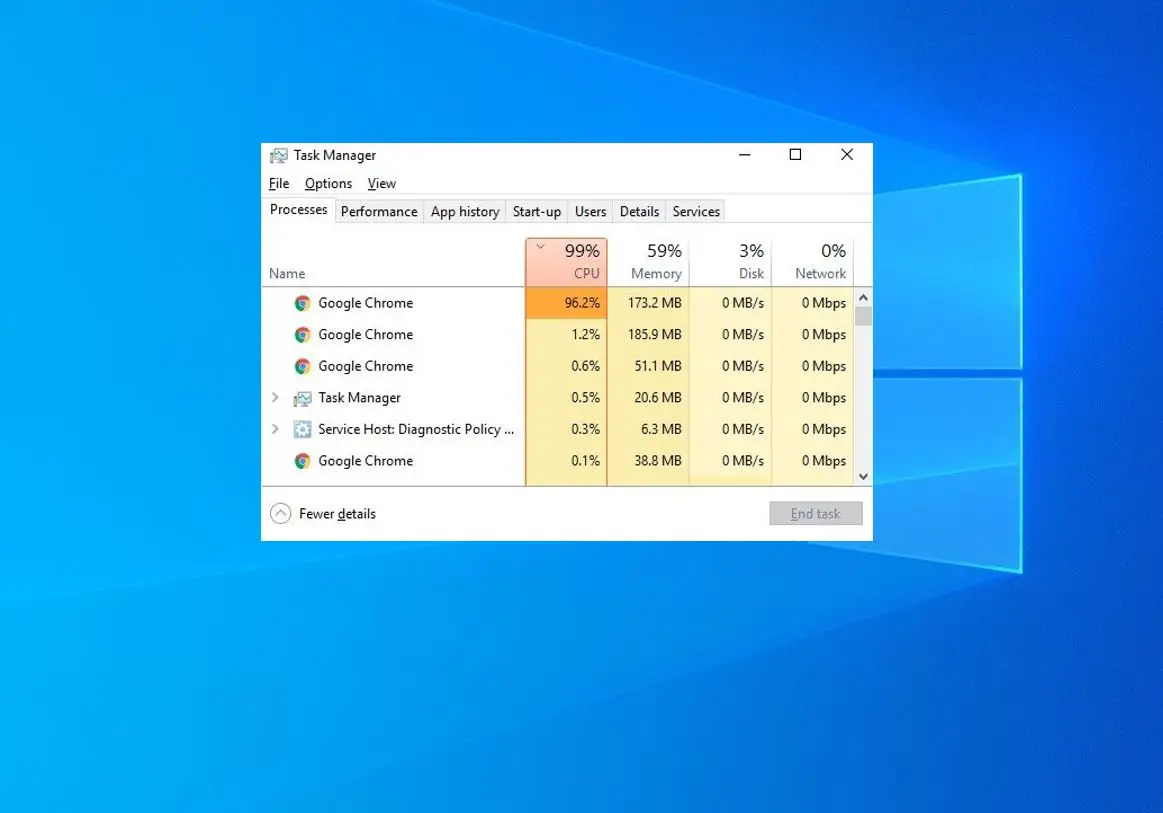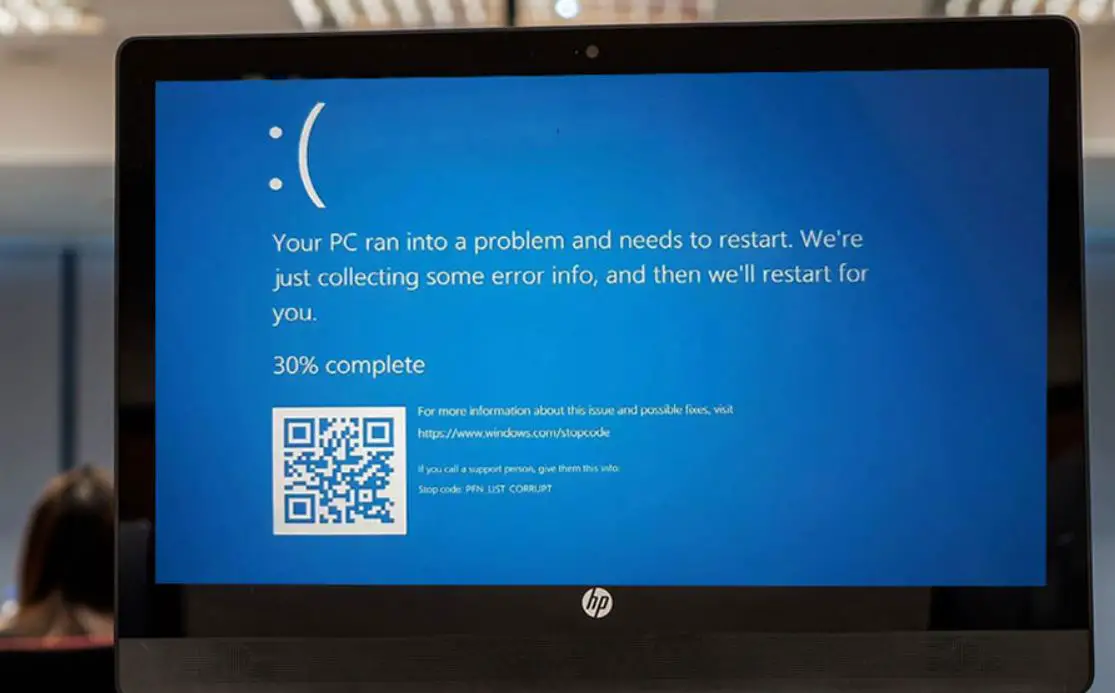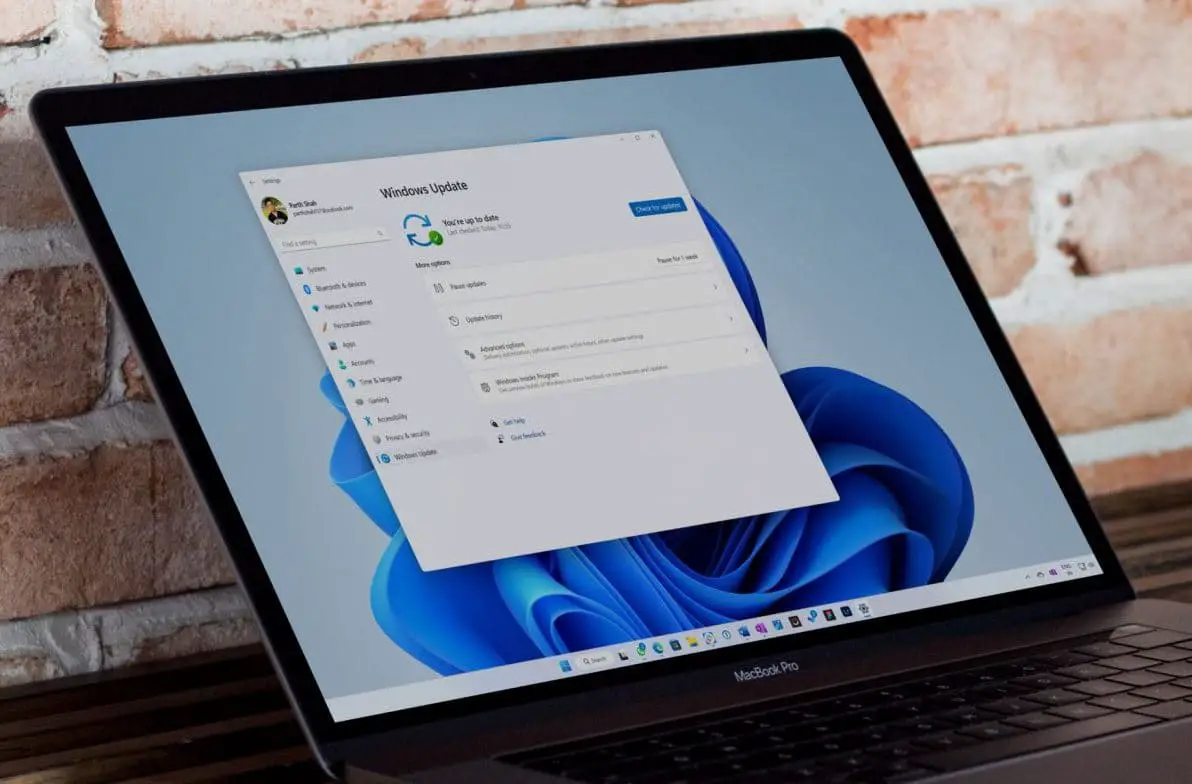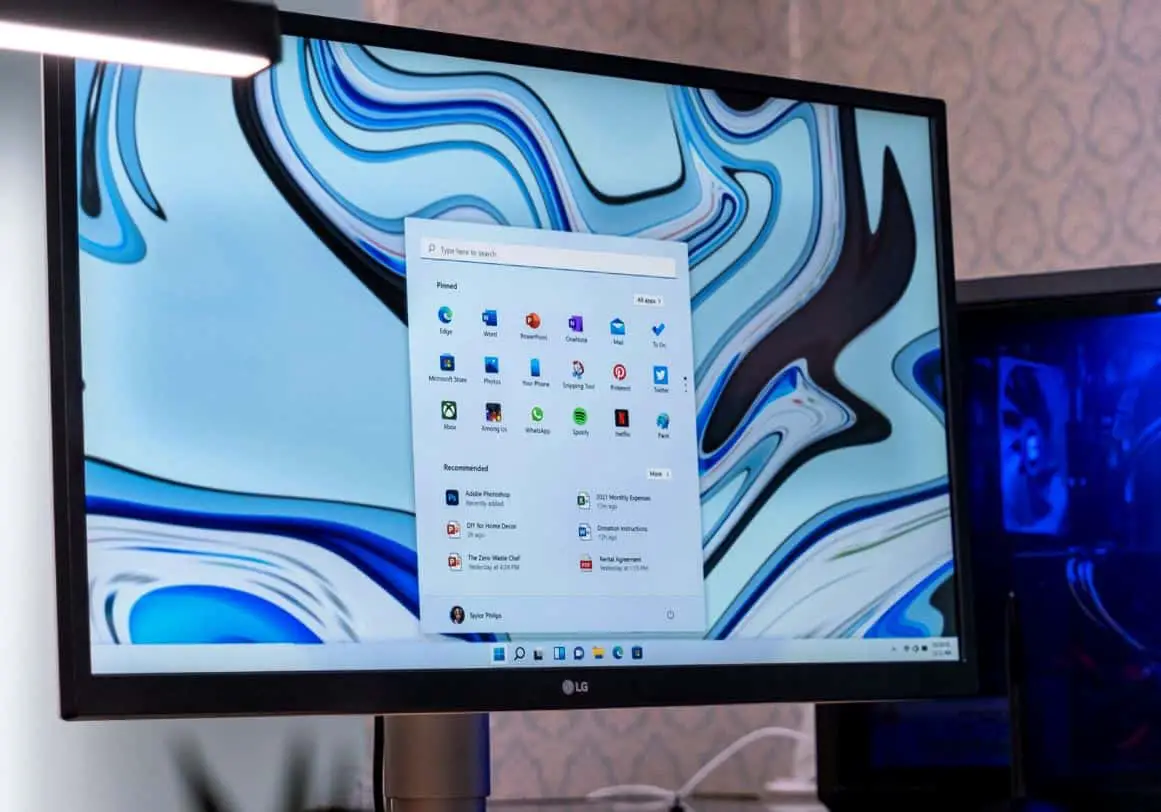Windows 11, the latest operating system from Microsoft, brings a fresh and streamlined experience to users with a host of new features and improvements. Also, Microsoft regularly releases Windows updates with the latest bug fixes, performance improvements, and security patches that help keep your computer running smoothly and protect it from potential threats. While Microsoft continually releases updates to optimize performance and fix bugs, users may still encounter occasional slowdowns. Users report, that their PC is not running as fast as they expected after upgrading to Windows 11. If you are one of them, don’t worry, there are few tweaks that help Make Windows 11 faster and smoother. In article explores the reason behind Windows 11 slow performance, and how to speed it up.
Contents
How to Make Windows 11 faster
Various factors cause Windows 11 slow performance, extended load times, freezes or not responding. Unnecessary startup programs, Outdated Windows Version or Drivers, Virus and Malware Infections or Corrupted system Files are common.
- Running unnecessary applications in the background can consume system resources, which leads to Windows 11 slowdown.
- Using an outdated operating system or drivers may result in compatibility issues and performance slowdowns
- Security threats can significantly impact system performance and responsiveness.
- Insufficient RAM or processing power can lead to sluggish performance.
- Again System files or applications that are corrupted can contribute to performance issues.
Whatever the reason, Here are seven settings that you should check and adjust to optimize your Windows 11 performance.
Disable Startup Programs
Many applications automatically launch at startup, when you boot up your PC. Some of these programs are essential for your computer to function properly, but others are just taking up resources and slowing down your startup time. Disabling unnecessary ones speeds up the boot process and improves overall performance.
- To disable unnecessary startup programs:
- Press Ctrl + Shift + Esc to open Task Manager, Navigate to the “Startup” tab.
- Here you can see a list of programs that run at startup, along with their impact on your PC performance.
- Right-click on unnecessary programs and select “Disable.”
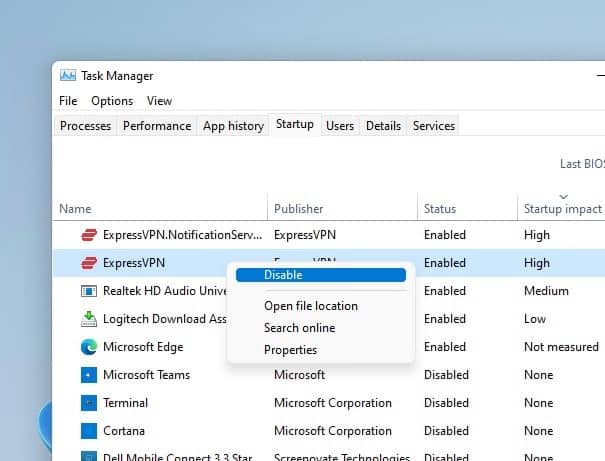
Alternatively, you can access settings using Windows key + I, -> Apps then startup. Turn off all the apps that you don’t want to run during startup.
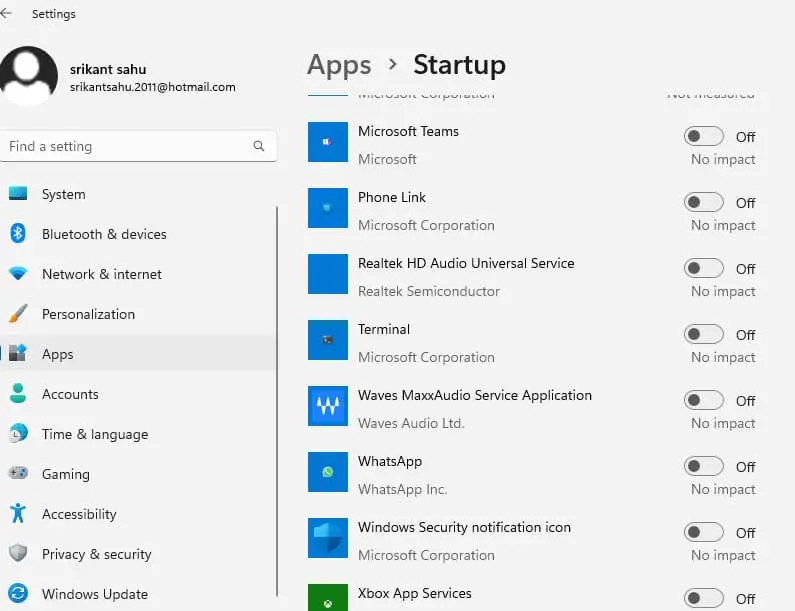
Disable visual effects
Windows 11 has a sleek and modern design that features transparency effects, animations, shadows, and other visual elements. While these effects can make your PC look more attractive, they can also consume system resources and slow down your computer. If you prefer speed over aesthetics, you can disable some or all of these visual effects to make Windows 11 faster.
To disable visual effects in Windows 11:
- Press the Windows key + X select Settings and then Personalization.
- Select the Colors option, and Deactivate the “Transparency impacts” toggle here.
- Then, from the sidebar, navigate to Accessibility, Select the Visual Effects option, and uncheck “Transparency effects” and “Animation effects.”
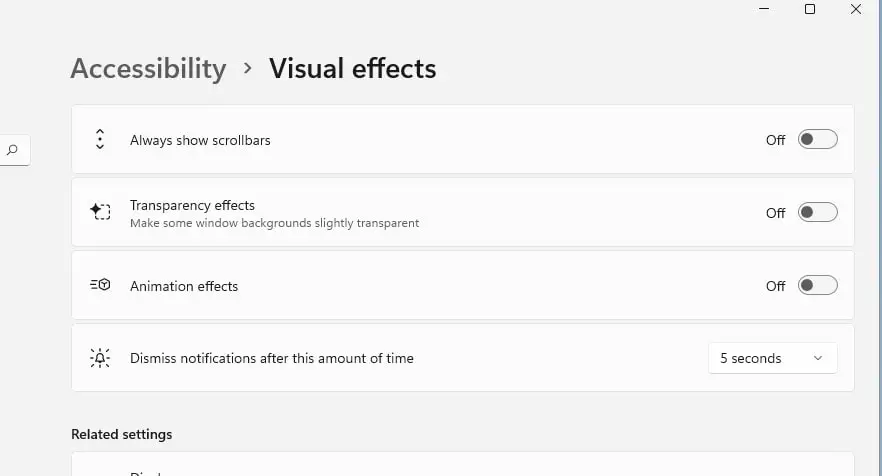
After that, press the Windows key + S to search for and select “View advanced system settings.”
Go to the “Advanced” section and under performance select “Settings.” Choose “Adjust for best performance” and click OK, and you’re done.
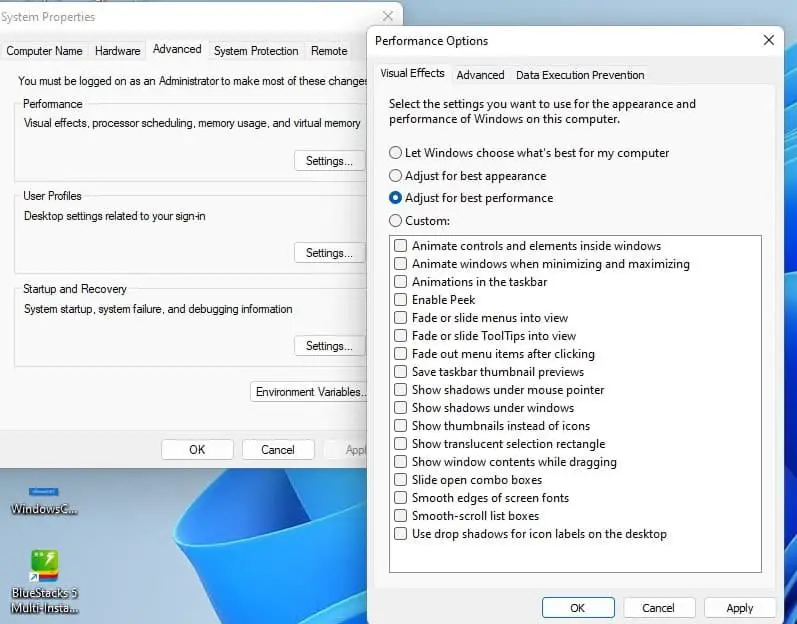
By disabling visual effects, you can free up system resources and speed up your computer.
Update Windows and Drivers
Having older Windows versions cause compatibility issue or slow down performance. Microsoft regularly releases updates for Windows 11 including performance improvements and latest bug fixes. You should install these updates as soon as they are available to keep your computer running smoothly.
- Press Windows key + I to open the settings app
- Go to Windows Update and hit Check for updates,
- If new updates are available, allow them to download and install.
Again Having outdated or incompatible drivers can cause various problems with your PC’s performance and stability. Updating your drivers and software can fix bugs, improve compatibility, and enhance performance.
By keeping your computer up-to-date, you can ensure that it is running at its best
You can Update drivers through Device Manager or visit the manufacturer’s website.
- Press Windows+X and select Device Manager from the menu
- Here you can see a list of devices connected to your PC, along with their driver status.
- Right-click on any device that has a yellow exclamation mark next to it and select Update Driver from the context menu.
- Select the first option and follow the instructions to search for and install the latest driver for your device.
Free up disk space
No matter which version of Windows you’re using, one of the best ways to speed up your computer is to free up disk space. Over time, your PC may accumulate junk files that take up valuable disk space and affect your PC performance. These files include temporary files, cache files, recycle bin files, old downloads, and more.
You can use built-in tools, like Disk Cleanup or enable storage sense to remove unnecessary files, freeing up storage.
- Press Windows key + S, type disk cleanup and hit enter,
- Select Drive letter C and click ok, Here you can see how much disk space you can free up by deleting various types of files.
- Check the boxes next to the files that you want to delete, and then click on OK.
In addition, you can enable storage sense to automatically delete temporary files or unnecessary files to free up space. We recommend setting Storage Sense to run automatically at least once a month.
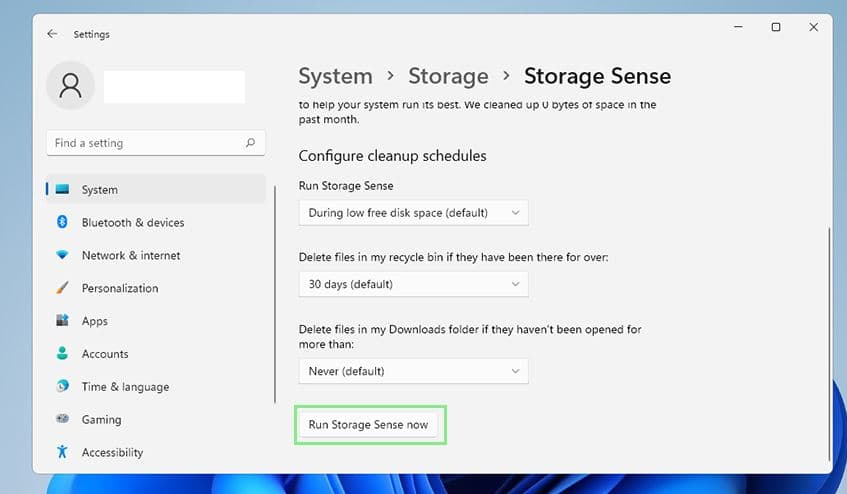
In addition, uninstall not used apps or games to free up the system drive. Move large files or folders to an external drive or cloud storage to free up disk space on Windows 11.
Increase Virtual Memory
Virtual memory is a feature that allows your PC to use part of your hard drive as an extension of your RAM. This can help improve your PC’s performance when you have multiple programs or tabs open at the same time. However, if your virtual memory is too low, it can cause slowdowns and crashes.
Here is how to increase your virtual memory:
- Press the Windows key + S to search for and select “View advanced system settings.”
- Go to the Advanced tab and click on Settings under Performance.
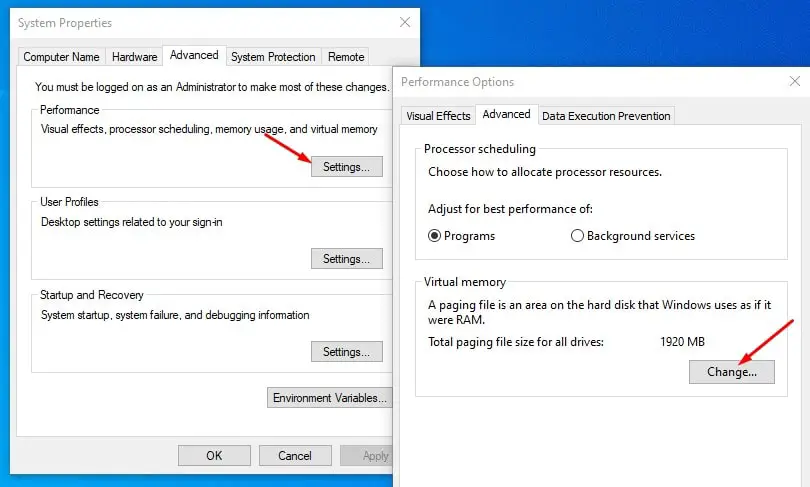
- Next, go to the Advanced tab again and click on Change under Virtual Memory.
- Uncheck the box for Automatically manage paging file size for all drives and select Custom size.
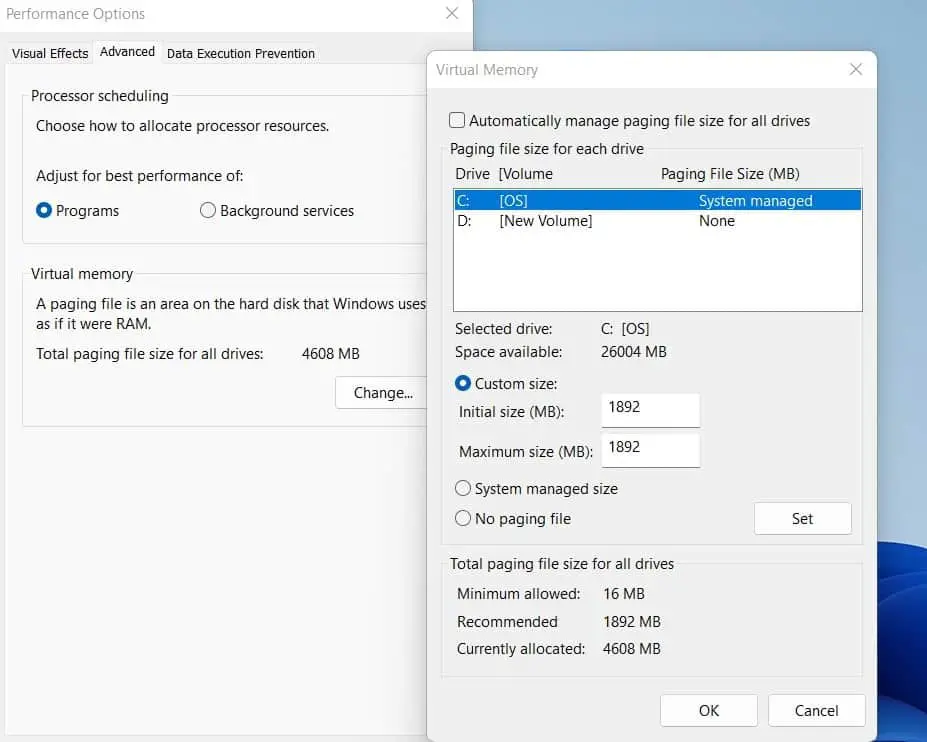
Enter a value that is 1.5 times your total RAM in both the Initial size and Maximum size boxes, then click on Set and OK. Restart your computer to apply changes.
Check for Malware infection
Sometimes, viruses or Malware infections can slow down your PC by running in the background, consuming resources, displaying ads, or stealing your data. You should perform a full system scan using Windows security (defender) to reliable third-party antivirus problems to scan and remove threats.
Run a full system scan using Windows Security or a reputable antivirus program. Quarantine or remove any detected threats.
To perform full system scan using Windows Security:
- Go to Settings > Privacy & security > Windows Security and click on Open Windows Security.
- Then, go to Virus & Threat Protection and click on Scan options.
- Choose a scan type (Quick scan, Full scan, Custom scan, or Microsoft Defender Offline scan) and click on Scan Now.
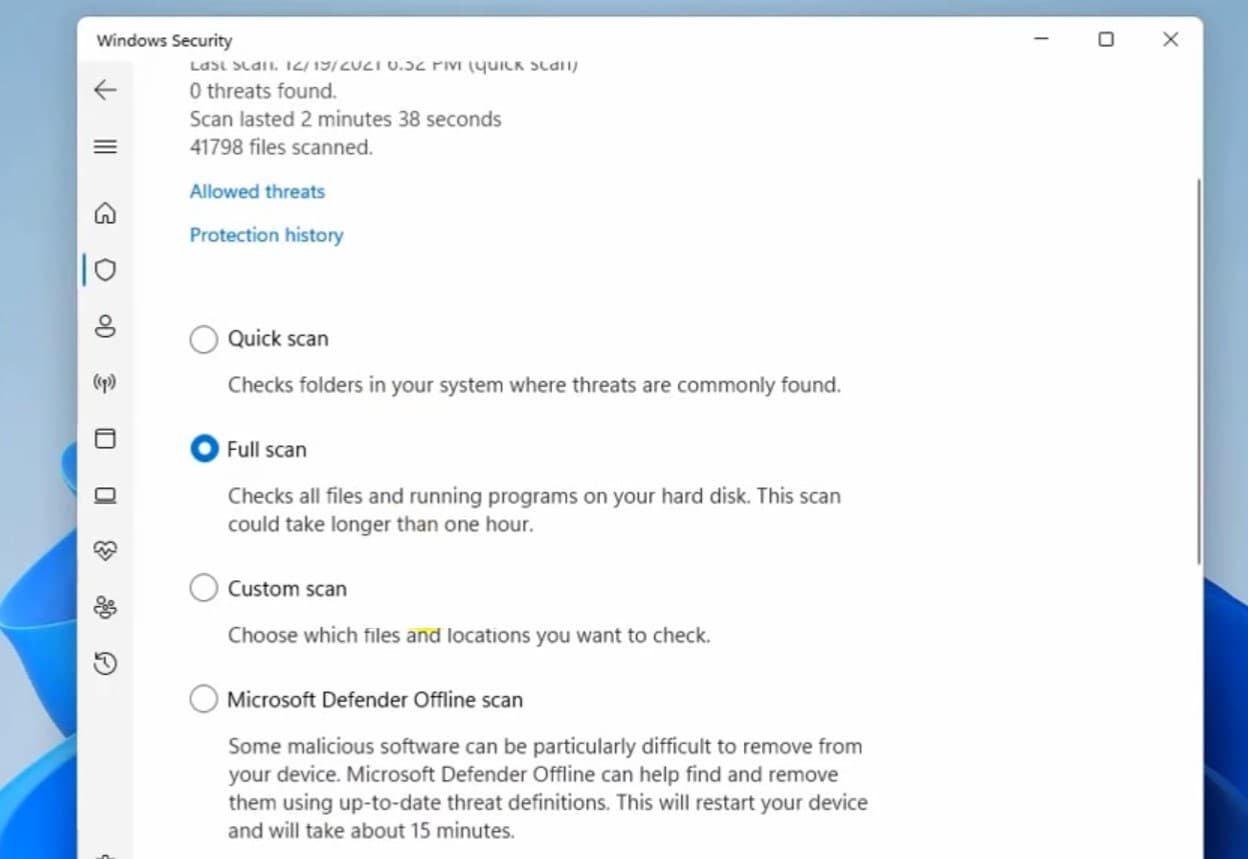
Repair Corrupt System Files
Sometimes, your Windows 11 system files may get corrupted or damaged due to various reasons such as malware infection, power outage, or improper shutdown. This can cause errors, crashes, or poor performance on your PC.
You can run built-in tools like SFC utility and DISM restore health to identify and repair corrupted system files, ensuring the integrity and stability of your Windows 11 operating system.
- Press Windows key + S, type cmd, then right-click on Command Prompt and select Run as administrator.
- First Run the System File Checker command, sfc /scannow,
- This will start scanning and repairing your system files, Allow the SFC process to complete.
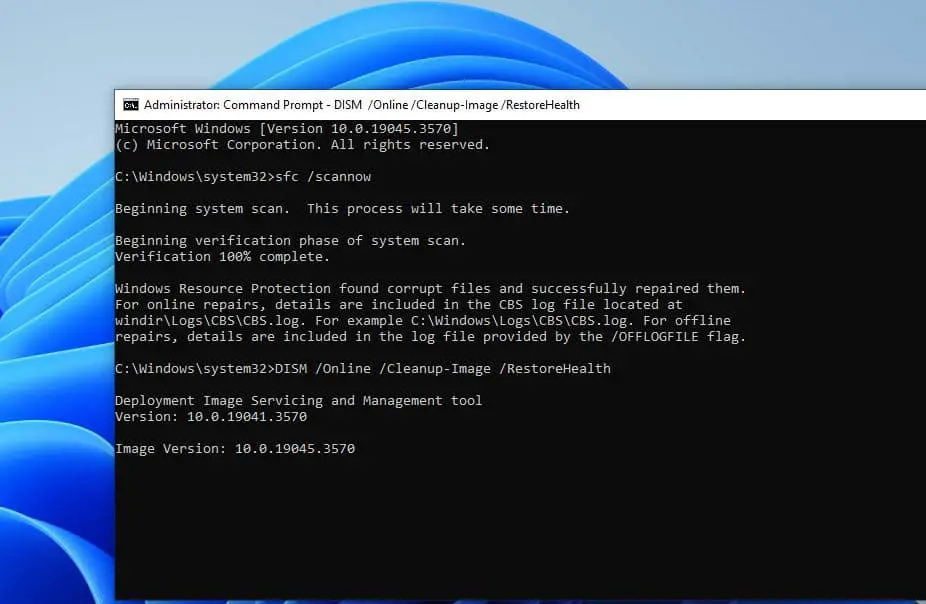
- Next run Deployment Image Service and Management Tool (DISM) with the command: DISM /Online /Cleanup-Image /RestoreHealth
- Let the DISM process complete. This step may take some time, depending on your internet connection and file corruption level
- Once complete 100%, restart your PC and check if this helps optimize Windows 11 performance.
In addition, If you have a hard disk drive (HDD) instead of a solid state drive (SSD), you may need to defragment your drive regularly to improve your PC performance. Defragmenting your drive rearranges the data on your drive so that it is more organized and accessible.
If the system remains slow after optimizations, upgrading hardware components like RAM or switching to an SSD can provide a significant performance boost.
Also read:

